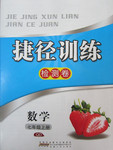��Ŀ����
I bought useful dictionary yesterday. dictionary is very cheap.
A. a; A B. a; The C. an; The
B �����������⣺����������һ�����õ��ֵ䣬�Ȿ�ֵ�ܱ��ˡ�����һ�����õ��ֵ��ʾ��ָ��useful��������['jusfl]�����Ը������ؿ�ͷ�ģ�ǰ���ò����ڴ�a���Σ����ı�ʾǰ���ᵽ�����Ȿ�ֵ䣬����ָ���ö��ڴ�the����ѡB��
��ϰ��ϵ�д�
 �ݾ�ѵ������ϵ�д�
�ݾ�ѵ������ϵ�д� С����ȫ�ܼ��ϵ�д�
С����ȫ�ܼ��ϵ�д�
�����Ŀ


